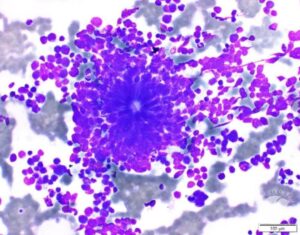 Since the early 1990s, chemotherapy followed by an autologous stem cell transplant has been the standard of care for high-risk neuroblastoma, a childhood cancer that starts in nerve cells outside the brain, especially in the tissues of the adrenal glands, and sometimes the neck, chest, or pelvis. Before children receive chemotherapy to destroy the neuroblastoma, some of their healthy blood stem cells are removed and stored. These cells are later returned, helping the child tolerate the toxic effects of the chemo.
Since the early 1990s, chemotherapy followed by an autologous stem cell transplant has been the standard of care for high-risk neuroblastoma, a childhood cancer that starts in nerve cells outside the brain, especially in the tissues of the adrenal glands, and sometimes the neck, chest, or pelvis. Before children receive chemotherapy to destroy the neuroblastoma, some of their healthy blood stem cells are removed and stored. These cells are later returned, helping the child tolerate the toxic effects of the chemo.
Each year, about 700 to 800 children in the United States are diagnosed with neuroblastoma. Neuroblastoma accounts for six percent of all childhood cancers in the United States.
About 90% of neuroblastoma is found in children younger than 5. The average age of diagnosis is between one and two years old. Neuroblastoma is the most common cancer diagnosed in children younger than one. It is rare in people older than 10.
For neuroblastoma, different combinations of high-dose chemotherapy have been used before the stem cells are infused. A European clinical trial demonstrated that patients who received busulfan and melphalan had improved event-free survival and fewer side effects than children who were treated with carboplatin, etoposide, and melphalan.
